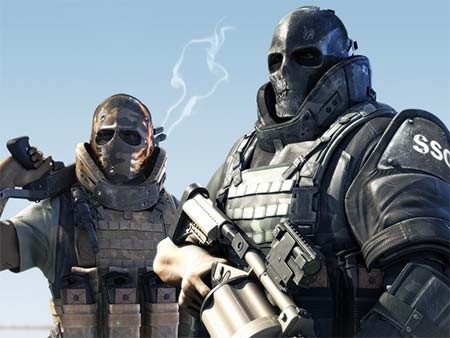“Ten years, Athena! I have faithfully served the gods for ten years! When will you relieve me of these nightmares?”
The game takes place before the events of the first God of War and follows Kratos through a small portion of his ten years in servitude to the Gods of Olympus.
Although the previous God of War games have placed a heavy focus on the narrative and overall story, in comparison Chains of Olympus is not as epic of a tale - however, the tale that it does tell is just as engaging and entertaining as in the previous two games and the welcome return of T.C Carson as Kratos and Linda Hunt as Gaia give the game that authentic God of War experience.
The game opens with Kratos being sent to the city of Attica to fend of a Persian invasion and kill a Basilisk unleashed on the city by the invaders, after dealing with the invasion Kratos witnesses something that forces him to embark on a journey through Hades and beyond., Kratos must once again face an evil threatening to destroy Olympus and the world with hopes that at the end the Gods of Olympus would live up to their word and free him of his torment.

While playing the game it can be easy to forget that this is in fact a portable title developed on a system that is relatively underpowered in comparison to the PS2, the game is a testament to the amazing care and effort put into development by Ready At Dawn, their familiarity with the platform and attention to detail has produced a game that looks and plays better than many console games.
You only have to glance at a screenshot to see that Chains of Olympus is pushing the PSP beyond what was thought possible, the game runs on an enhanced version of the Ready At Dawn proprietary engine used in Daxter and as a result graphically it is exceptional and unmatched by any other PSP game. The environments are detailed, the lighting is beautifully done and character models are rendered with painstaking detail, along with the magnificent sense of scale these visual touches successfully evoke the eye-catching aesthetic that God of War has become known for, and best of all – it all runs without so much as a single hiccup.The stability of the game is in large part due to the fact that the game is pushing the PSP’s processor to the limit by allowing it to run at 333MHz.
One thing that I found particularly impressive is the animation of Kratos, as well as his remarkably realistic facial animations Kratos now moves with a realistic fluidity, instead of launching into a run the animations show progression and momentum, his roll and jump animations all look much less rigid and awkward which makes Kratos much better to look at as well as control.
The deep combat the series has become known for also remains fully intact. Whereas in the previous games Kratos would build up an arsenal of weaponry in Chains of Olympus there are only two weapons, his trademark Blades of Chaos and the Gauntlet of Zeus, a huge metal boxing glove like weapon that allows players to get up close and personal with their enemies. As well as weapons Kratos also has a number of magical abilities at his disposal, although the abilities are just rehashes of those featured in God of War 1 and 2 they are still great to use and more importantly are effective in combat.
The most surprising aspect of the combat is the controls, although the PSP lacks the second analogue nub this is compensated for by utilising the shoulder buttons in evasion, whereas on the Dual Shock 2 the right analogue stick would control the evasive manoeuvres on the PSP pressing both the shoulder buttons and then moving the nub in the desired direction will make Kratos leap to safety in that direction, initially this seems cumbersome but in actual fact it is a surprisingly intuitive alternative which makes movements far more precise. This control scheme also allows for a more seamless transition from offence to defence.

There is no doubt that God of War Chains of Olympus is a remarkable game and a technological feat but it does have a few small problems.
The biggest problem is that the game does absolutely nothing new, if anything it actually cuts out some key improvements on the original God of War. Whereas God of War 2 introduced a number of new gameplay mechanics such as the grappling mechanic, the flying and the crazy Incredible Hulk jumping through environments, Chains of Olympus actually takes all of these out, although this doesn’t really impact that game significantly the experience is a little less exciting since it’s all familiar territory.
As well as this Chains of Olympus is quite a short game, most players will get through it in around 6 hours which is a little disappointing, however the game is full of bonus content including a God mode as well as a number of challenges which in turn unlock alternative costumes for use in the main game, so there is a lot of replay value in the game.

When all is said and done God of War: Chains of Olympus is an extraordinary technical achievement and an amazing game that is worthy of the God of War name, even when compared to its console counter-parts the game holds up remarkably well. The impressive visuals, familiar but excellent gameplay and thrilling story all work in unison to provide an experience unmatched by any other PSP game, it’s simple - if you own a PSP you need to play this game.

















